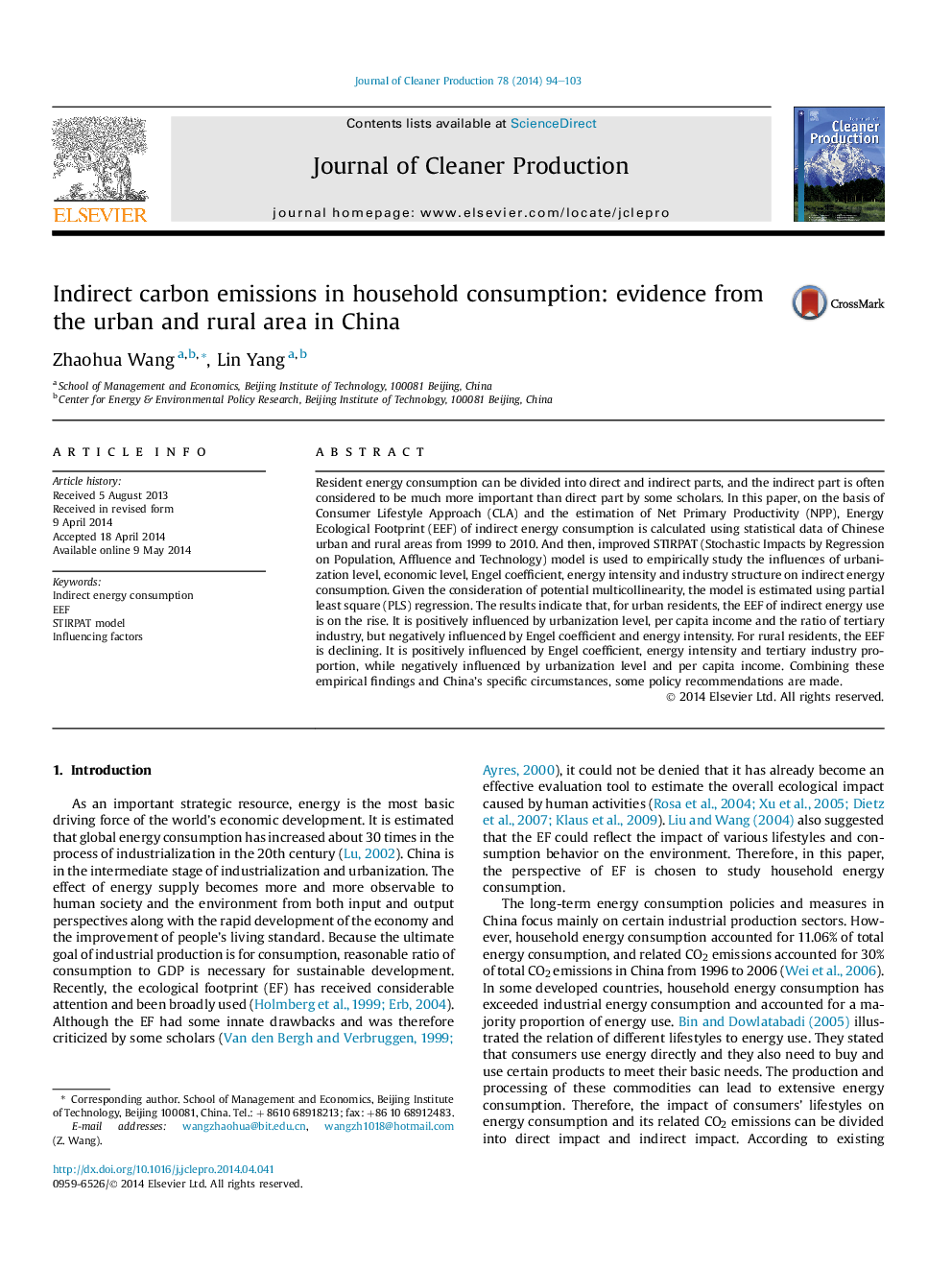| Article ID | Journal | Published Year | Pages | File Type |
|---|---|---|---|---|
| 1744876 | Journal of Cleaner Production | 2014 | 10 Pages |
Abstract
Resident energy consumption can be divided into direct and indirect parts, and the indirect part is often considered to be much more important than direct part by some scholars. In this paper, on the basis of Consumer Lifestyle Approach (CLA) and the estimation of Net Primary Productivity (NPP), Energy Ecological Footprint (EEF) of indirect energy consumption is calculated using statistical data of Chinese urban and rural areas from 1999 to 2010. And then, improved STIRPAT (Stochastic Impacts by Regression on Population, Affluence and Technology) model is used to empirically study the influences of urbanization level, economic level, Engel coefficient, energy intensity and industry structure on indirect energy consumption. Given the consideration of potential multicollinearity, the model is estimated using partial least square (PLS) regression. The results indicate that, for urban residents, the EEF of indirect energy use is on the rise. It is positively influenced by urbanization level, per capita income and the ratio of tertiary industry, but negatively influenced by Engel coefficient and energy intensity. For rural residents, the EEF is declining. It is positively influenced by Engel coefficient, energy intensity and tertiary industry proportion, while negatively influenced by urbanization level and per capita income. Combining these empirical findings and China's specific circumstances, some policy recommendations are made.
Keywords
Related Topics
Physical Sciences and Engineering
Energy
Renewable Energy, Sustainability and the Environment
Authors
Zhaohua Wang, Lin Yang,
